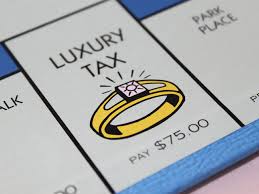A new luxury tax was adopted by Congress in 1990 on items such as private airplanes, yachts, furs, expensive cars and jewellery. This tax was imposed so as to raise revenue from those who could most easily afford to pay. Because only the rich could afford to buy such extravagances, taxing the luxuries seemed a logical way of taxing the rich.
This is a good way of taxing the rich, right ? Even you might be thinking that and well done congress, you did a good work! Every layman or people without the knowledge of economics would also think that way. But what’s actually shocking is..this isn’t true. How ? Why ? You will find your answer soon.
Just scroll down and read the entire article. 🙂
Yet when the forces of supply and demand took over, the outcome was quite different from what was intended by this new tax policy.
Consider for example, the market for yachts. Their demand is quite elastic. A millionaire can easily not buy a yacht and can use the same money to buy the other extravagances. By contrast, supply of yachts is relatively inelastic, atleast in short run. The yacht factory cannot easily shut down or can be convert to other alternative uses and workers who provide their labour for building yachts will not be eager to change their careers in response to changing market conditions.
The burden of this tax would fall largely on the suppliers due to inelastic supply and elastic demand. That is , this tax on yachts places a larger burden on the firms and workers who build the yachts because they end up getting a lower price for their product. However, the workers are not wealthy. Thus the burden of the tax falls largely on the middle class than on the rich.
Why does this happen ?
You might be wondering what elasticity has to do with the tax burden.
The answer lies here
When a good is taxed ,buyers and sellers of the good share the burden of the tax. But how exactly is this burden divided? Only rarely will it be shared equally. The incidence of the tax falls more heavily on the side of the market which is less elastic. This is because, elasticity measures the willingness of the buyers or sellers to leave the market when conditions become unfavourable. A small elasticity of demand means that buyers do not have good alternatives to consuming a particular product whereas a small elasticity of supply means that suppliers don’t have good alternatives to producing that product . Thus when a good is taxed,the side of the market which is less willing to leave the market because it has fewer alternatives has to bear more of the burden of the tax.
Thus unknowingly this luxury tax imposed was repealed in 1993 by Congress when the actual effects of the tax became apparent to them.
Hope you have got your answer now! 😛





47 Comments. Leave new
Well presented!
Thanks 🙂
informative 🙂
Thanks
The actual way to understand the burden of tax! nice efforts 🙂
Yeah! Thanks 🙂
Nice work. Well explained
Thanks a lot 🙂
Good article..!
Thanks 🙂
Informative and great job.
Thanks a lot!
loved the way in which you presented the info…great work!
Thank you so much
Well described! Good 🙂
Thank you 🙂
Well articulated.
Thanks a lot 🙂
Well written.
Thanks 🙂
very good efforts…informative too..
Thanks a lot 🙂
very nicely presented article!
Thanks 🙂
Informative 🙂
Thanks
Very well explained. Such an informative article. Great work 😀
Thank you so much
Informative
Thank you !
Informative
Thanks
nicely explained!you made us acquainted with the core of the concept!
Thank you aman 🙂
Nice information!!! You could have also highlighted the issue of people not paying their taxes on time properly.
Thank you. Bhavya, this is totally different from what you want me to write about in this article.
Vry well written
Thanks
Very informative
ÙThanks
Thanks
Thanks
Very informative. Well written !
Thanks
Well explained! 😀
Thanks
Very well written Akanksha 🙂